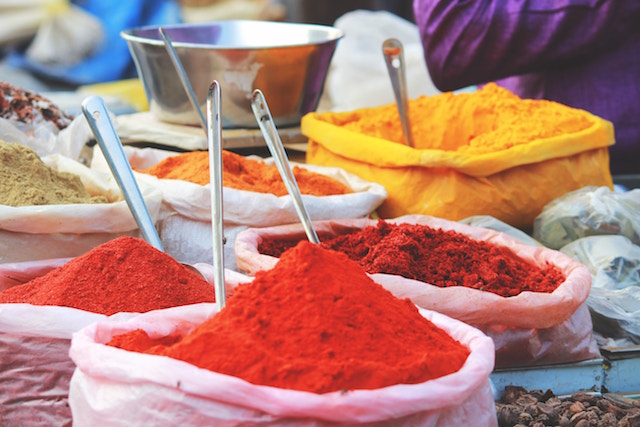
For most of my childhood, I suffered from debilitating eczema, with itchy, uncomfortable, and unsightly skin that would embarrass me during the day, and keep me up at night.
Every doctor I visited had the same prescription: “Use a topical steroid cream, and it will go away.”
And it did. And it came back.
Fortunately, my journey on the path of food as medicine led me to view my disorder in a new light. While genes can be powerful determinants of our fate, I saw firsthand that food and lifestyle play an under-appreciated role in our wellness destiny.
In my own case, a shift in my diet proved to be game-changing.
At the root of nearly all modern diseases, like eczema, psoriasis, irritable bowel disease, thyroid disease, obesity, and even cancer, is the double-edged sword we rely on for our survival—inflammation. Inflammation is a useful biological response to infection and disease, but, like a fire gone wild, chronic, unwanted inflammation can make us sick.
The modern Western diet, lifestyle, and environmental factors contribute to this pro-inflammatory storm. Fortunately, nature has provided us with powerful, inflammation-fighting ingredients that are delicious to boot!
While everyone rightfully reaches for turmeric, that’s not where the inflammation-busting story ends.
Here are five (often uncelebrated) anti-inflammatory spices we ought to embrace in our kitchens.
1. Cayenne.
A recent study showed that capsaicin, found in cayenne pepper, lowers inflammation and obesity by altering the composition of gut bacteria toward more beneficial strains [1]. Studies have also shown that people who consume more chili pepper have a 13 percent reduction in mortality, likely linked to capsaicin’s anti-inflammatory effects [2, 3]. If you are not a fan of cayenne’s heat, milder paprika, which contains a smaller amount of capsaicin, is a good alternative [4].
2. Cinnamon.
Good ol’ cinnamon blocks inflammation-promoting compounds in the body like arachidonic acid and TNF-alpha [5]. However, the widely available Cassia cinnamon contains large quantities of coumarin, a liver toxin. It’s worth going the extra mile to find Ceylon cinnamon, with negligible coumarin, to reap the anti-inflammatory benefit without toxic side effects [6].
3. Nutmeg.
Not to be reserved for the holiday season alone, nutmeg fights inflammation by blocking nitric oxide synthesis [7]. Nutmeg oil can alleviate inflammation by slowing production of COX-2—the target of Ibuprofen [8]! (A small human trial did not reproduce this effect, however, so more studies are necessary [9]).
Importantly, nutmeg, at high doses, can cause hallucinations and be toxic in pregnancy [10, 11]. Similarly, infants should not be offered nutmeg teas, an ancient remedy for digestive discomfort, because of deleterious effects at high concentrations [12].
4. Sumac.
This sour, delectable spice, often used in Middle Eastern cuisine, has been shown to block multiple arms of inflammation, including molecules like TNF-alpha, IL-6, and IL-8. Sumac appears to have this effect by inhibiting the gene regulators NF-kappa B, STAT-3 and nitric oxide [13]. Sumac is also a powerful antioxidant, mopping up free radicals that are formed during normal metabolism and in the presence of inflammation [14, 15].
5. Pepper.
Yes, the humble peppercorn that we often take for granted has inflammation-busting powers! Piperine in pepper inhibits the central inflammation regulator, NF-kB [16]. In the same vein, piperine helps ease irritable bowel syndrome, ulcerative colitis, and gastric ulcers [17, 18]. Moreover, piperine boosts the bioavailability of turmeric, the well-known anti-inflammatory superhero, making this spice duo exactly what the doctor ordered [19].
Packed with aroma, flavor, and beneficial compounds, these spices battle inflammation and elevate our food in exciting ways. They also expand the palates of our kids and boost their health—a win-win all around.
So the next time you’re looking to up your anti-inflammatory game, look beyond turmeric to these magical spices! Your health and taste buds will thank you for it.
References:
[2] http://journals.plos.org/plosone/article?id=10.1371/journal.pone.0169876
[4] Capsaicin Level of Various Capsicum Fruits
[7] New inhibitors of nitric oxide production from the seeds of Myristica fragrans
[9] Nutmeg extracts for painful diabetic neuropathy: a randomized, double-blind, controlled study
[10] Unintentional nutmeg autointoxication
[11] Nutmeg intoxication in pregnancy. A case report
[12] Myristicin and phenytoin toxicity in an infant
[15] Oxidative stress, inflammation, and cancer: How are they linked?
[19] Influence of piperine and quercetin on antidiabetic potential of curcumin
~
Relephant:
The Connection Between Mood and Inflammation.
How to Stop Attacking Yourself: 9 Steps to Heal Autoimmune Disease.
~
~
Author: Kanchan Koya
Image: Akhil Chandran/Unsplash
Editor: Callie Rushton
Copy Editor: Catherine Monkman
Social Editor: Taia Butler


 Share on bsky
Share on bsky




Read 0 comments and reply